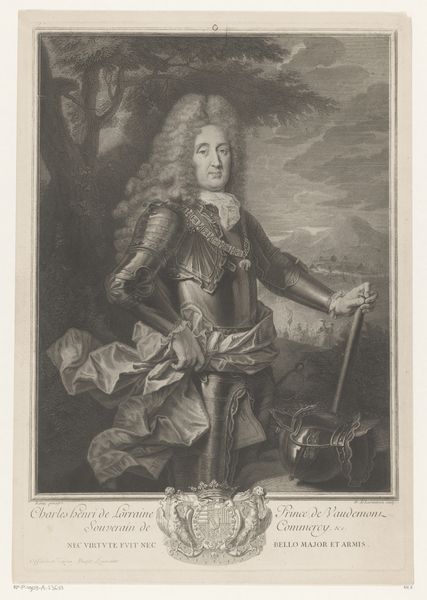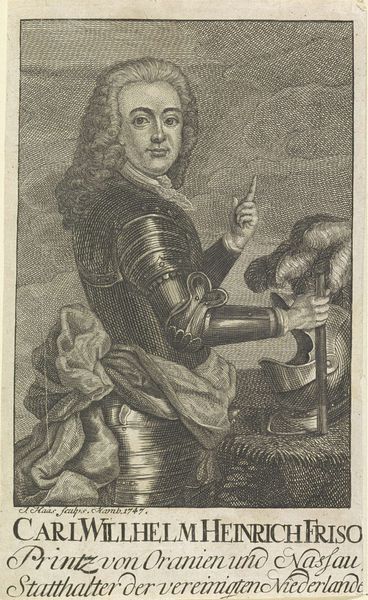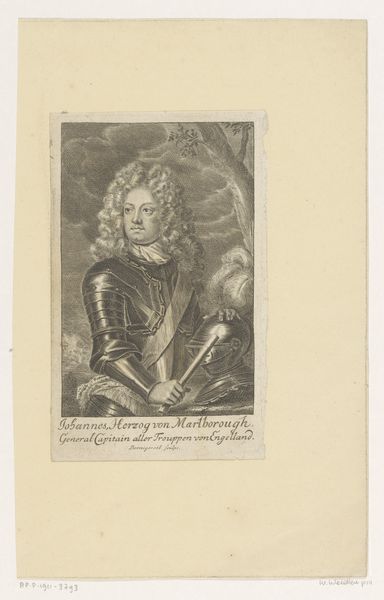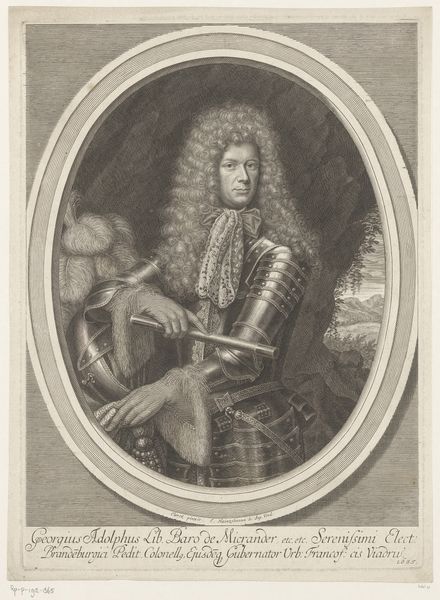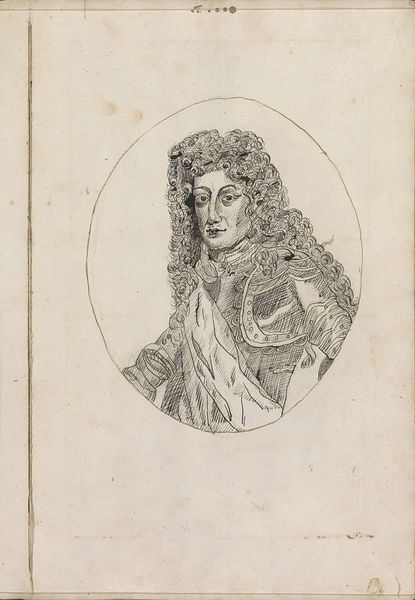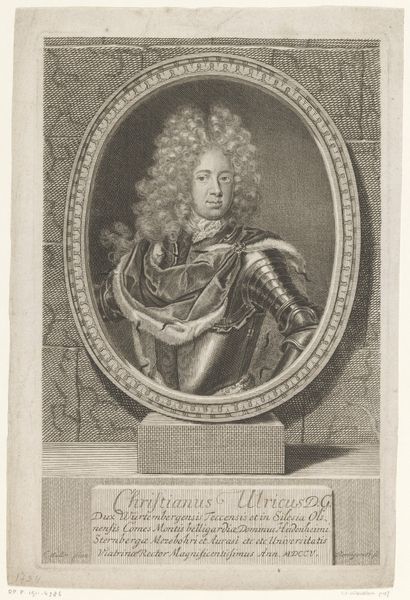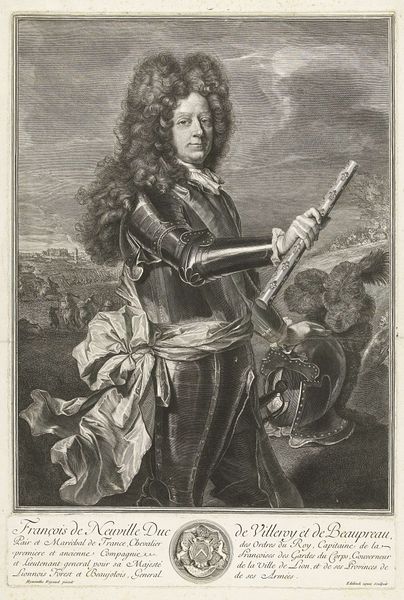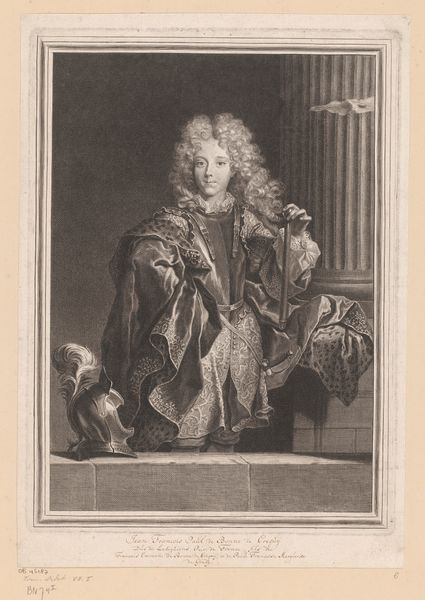
watercolor
#
portrait
#
baroque
#
watercolor
#
watercolor
Dimensions: height 209 mm, width 164 mm
Copyright: Rijks Museum: Open Domain
Editor: Here we have a portrait of Arnold Joost van Keppel, likely created around 1712 or 1713, done in watercolor. The subject's stiff pose in full armor almost seems to clash with the delicate nature of the medium, creating a curious tension. What strikes you most about this piece? Curator: The striking tension you observe reflects a pivotal moment in the public image of aristocracy. While rendered in a delicate watercolor, evoking personal or even intimate associations, the armour and the confident, even aloof pose clearly place Keppel within a very public and powerful role. What kind of public image was Keppel and the aristocracy more broadly hoping to project, do you think? Editor: Prestige and authority, obviously! The armor speaks of military might, and the portrait itself is an assertion of status, yet done in watercolor as opposed to oil, which creates a different impression, softer perhaps? Curator: Precisely. The choice of watercolour allows us to question what aspects of power are being amplified and which are softened, negotiated or even reconsidered. The Baroque period, with its theatricality, grappled with portraying authority. How does the choice of medium complicate a straightforward reading of power here, compared to, say, a grand oil painting that we would expect to see? Editor: It almost democratizes it in some way? It's not as imposing, making it feel a bit more accessible, a portrait that could circulate more easily perhaps. I never considered the role the medium plays in dictating social narratives and power structures before. Curator: Exactly! Consider then how the creation and display of images were influenced by patronage, social class and accessibility and how that continues to shape not just how art is made, but what is preserved for the ages, and even valued by institutions today.
Comments
No comments
Be the first to comment and join the conversation on the ultimate creative platform.


